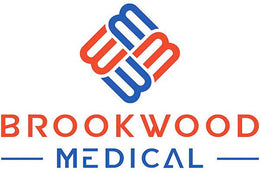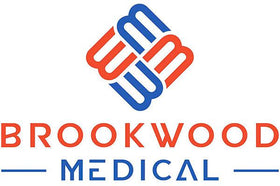Mastering Face Masks: KN95, 3PLY, and More Explained

Frequently Asked Questions
1. What are KN95 masks and how effective are they?
2. What are the key features of 3PLY surgical masks?
3. How do cloth masks compare to other types of masks?
4. What should I consider when choosing a mask for my toddler?
5. How should I maintain and care for reusable cloth masks?
With the rise of health awareness, especially during the pandemic, face masks have become essential commodities in our daily lives. They not only protect against airborne viruses but also reduce the spread of infections. However, with various types of masks available on the market, it can be challenging to differentiate between them. In this article, we’ll explore the different types of face masks, including KN95, 3PLY, and others, to help you make informed choices for yourself and your loved ones, including the best disposable toddler masks for your little ones.
Understanding the Basics of Face Masks
Face masks serve different purposes, and understanding them can help you select the right one for your needs. However, the market can seem overwhelming with all the different options available. When navigating through the choices, consider the following factors: protection level, comfort, breathability, and intended use.
The Types of Masks You Need to Know
KN95 Masks
KN95 masks are among the most recognized face coverings due to their high filtration efficiency. These masks filter out at least 95% of airborne particles, including viruses and bacteria. Originally designed for industrial use, they have gained popularity as a crucial personal protective equipment (PPE) during health crises.
- Filtration Efficiency: KN95 masks provide superior protection against small particles.
- Design: The snug fit helps to minimize leaks around the edges.
- Comfort: Many KN95 masks come with soft ear loops and adjustable nose bridges for an improved fit.
3PLY Surgical Masks
3PLY surgical masks are commonly used in healthcare settings. They consist of three layers: a water-resistant outer layer, a filter layer, and a soft inner layer. Surgical masks are ideal for protecting against large respiratory droplets and are recommended for both medical professionals and the general public.
- Layered Protection: The three layers provide a barrier against droplets.
- Comfortable Fit: These masks are designed for breathability and comfort during extended wear.
- Single-Use: 3PLY masks are intended for single-use and should be disposed of properly.
Cloth Masks
Cloth masks became popular during the pandemic due to their availability and versatility. Made from various materials, they can be washed and reused, making them an eco-friendlier option. However, the effectiveness of cloth masks largely depends on the fabric and construction.
- Customizable: Cloth masks come in various designs and sizes, making them suitable for anyone, including children.
- Breathable: They are generally more comfortable for extended wear but may not provide the same level of protection as surgical masks or KN95s.
- Care: Cloth masks should be washed regularly to maintain hygiene.
Specialty Masks
Face Shields
Face shields are transparent plastic barriers that cover the face and are often used in conjunction with other masks for added protection. They shield the face from splashes and provide a physical barrier against respiratory droplets, but they should not replace masks.
Disposable Toddler Masks
When it comes to children, especially younger ones, having the right face mask is paramount. Disposable toddler masks are designed specifically for smaller faces. They are generally lightweight and feature soft ear loops to ensure comfort. Ensuring a proper fit is essential, as masks that are too loose may not provide adequate protection.
- Soft Materials: These masks are made with safe, non-irritating materials to prevent discomfort.
- Fun Designs: Many disposable toddler masks come in bright colors or fun prints to appeal to children.
- Safety First: Always ensure that the disposable mask for your toddler meets safety standards.
Comparing Effectiveness
When selecting a mask, it’s crucial to compare their effectiveness based on the following criteria:
Filtration Levels
KN95 masks offer the highest level of filtration, followed by 3PLY masks. Cloth masks generally have variable effectiveness based on material and layers. Facemasks should always fit snugly against the sides of your face without gaps.
Comfort and Breathability
Comfort is subjective; what is comfortable for one person may not be for another. KN95 masks can feel confining to some, although they are effective. 3PLY masks are generally more breathable, while cloth masks offer varying comfort levels based on fabric.
How to Properly Use Face Masks
To maximize the effectiveness of any face mask, proper usage is essential. Here’s how to do it:
- Clean Hands: Always wash your hands before putting on or taking off a mask.
- Cover Your Nose and Mouth: Ensure the mask covers both your nose and mouth completely.
- Avoid Touching: Do not touch the mask while wearing it; if you must, wash your hands afterward.
- Disposable Masks: Do not reuse disposable masks. Proper disposal is vital to maintain hygiene.
The Importance of Mask Maintenance
For reusable masks like cloth designs, maintenance is key. Here are some tips:
- Washing: Clean cloth masks after each use. Use hot water to maintain hygiene.
- Dry Completely: Ensure masks are completely dry before wearing again to prevent bacterial growth.
- Inspect Regularly: Check for any damage or wear and replace your mask if necessary.
From Crisis to Normalcy: The Role of Face Masks
The conversation around masks has evolved since their initial introduction. While the hope is to soon return to a world without masks, using them responsibly during health crises can save lives. They are not just personal protection tools, but a collective action in the fight against transmissible diseases.
What Lies Ahead for Face Masks?
The future of face masks may bring innovations in design, materials, and technology. Anticipated developments may include higher filtration capabilities, smart masks incorporating technology, and evolving hygiene practices. However, one aspect remains constant: the need for appropriate dispersion of knowledge around mask types and their uses.
Ultimately, understanding the differences between masks is essential for making informed decisions. Whether you choose KN95, 3PLY, cloth, or specialized masks like disposable toddler masks, you can take a proactive step toward personal and public health.
In a world that has become increasingly health-conscious, staying informed is your best ally. Equip yourself and your loved ones with the knowledge and appropriate tools to stay safe. Breathe easy and wear your mask with confidence, because with the right information, you’re prepared for whatever comes next!






